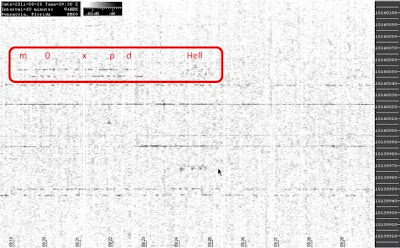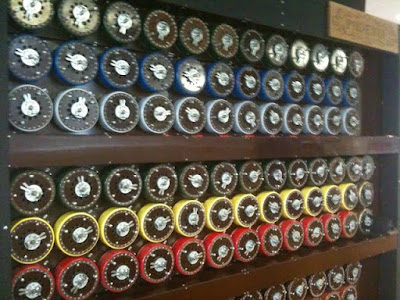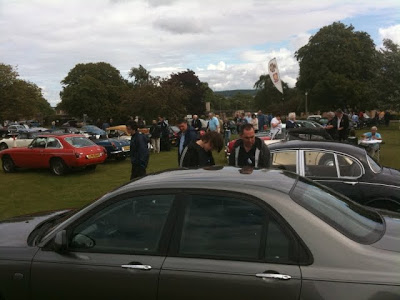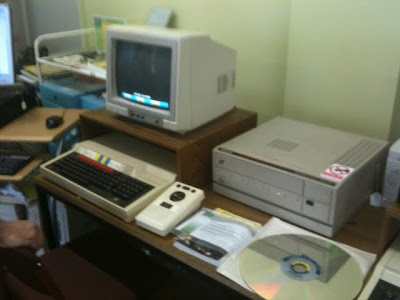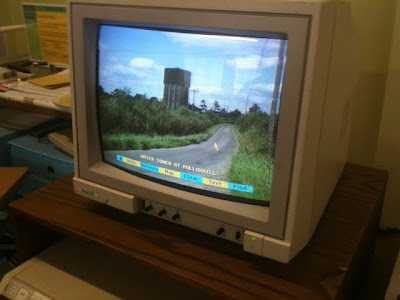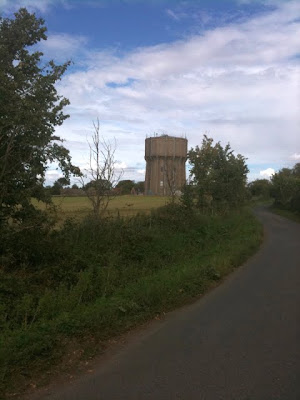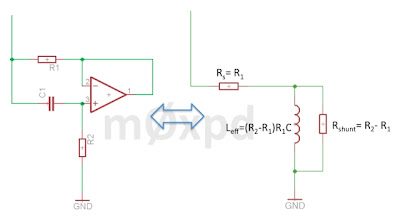My attendance at weekly meetings of
my radio club has been rather patchy of late (
pressures of work intruding on the finer things in life), but my last visit coincided with a Sale of Surplus Equipment, at which we managed to capture some of the excitement of the last few minutes of
Bargain Hunt (albeit with more desirable items for sale, naturally). In addition to a nice Linear Amplifier (
which allows me to make vulgar QRO emissions at 12 Watts, should I ever want to get involved in EME or similar games Hi HI) I was winning bidder on an old piece of kit which bristled with silver plated BNC sockets - 19 in number...

Perhaps you can make out the label - "Junk but spare sockets". A 50 pence bid secured the item.
A side panel carried identifying marks, revealing the object to be from the
Hewlett Packard stable...

but some searching on the 'net hasn't provided any more information on pedigree, use, date or other aspects of provenance.
Taking off the sides revealed a set of 11 parallel "channels" (ten of which are connected to BNC sockets on the "front" and the last of which leads to a socket mysteriously located off on one side)...

Casual inspection suggests the unit is some kind of switching/multiplexing device (the clue was in the name on the side of the box!!) with a number of input signals multiplexed onto a number of output channels, using diode switching. The channel select and other control signals apparently were applied through the Centronics-style connectors seen at the right-hand end of the photo above. The whole thing was beautifully built -
seemed a pity to pull it to pieces - but here's one channel stripped out of the enclosure...

At this point I had completed the harvest of BNC sockets - now I was about to harvest a different resource.
You can see a line of devices in glass envelopes protruding from the bottom of the board in the photo above. Unsoldering one confirmed my initial identification as a diode and a quick test with the multimeter showed a forward voltage drop which suggested the diode to be of the Germanium persuasion.
I couldn't see any identifying marks, but the glass envelope was clearly marked with colour rings - as on a resistor...

I figured the colours were brown - white (or, possibly, grey) - green (with a rather indistinct black blob at the other end). I had never seen colour coding on a diode before - so off I went to the internet to search for an explanation.
I learned two important nuggets of information, completely new to me...
Firstly, colour codes - exactly those familiar to us from resistors - were indeed used on diodes and semiconductors in general. That made these diodes "195"s - but that didn't make much sense. Until I recognized a second fact which had been staring me in the face for decades; semiconductors were often named using a system in which the device type (i.e. diode) was followed by a numerical name. The device type was signified by the
Number of junctions ("N" for number).
According to this scheme a "1N" device is a diode (there being one P-N junction defining a diode), as in the entirely familiar 1N4148. Similarly, a "2N" device is a transistor (there being two P-N junctions in a [BIpolar Junction] Transistor), as in the entirely familiar 2N3904. It is so entirely obvious when you think about it that I'm surprised I'd never realized before!
I am used to learning something about the nature of a valve/tube from its (alpha-numeric) name - as in an ECC83 being a double triode and a PCL86 being a triode-pentode, the E and the P signifying different heater requirements. However, despite a lifetime of using diodes called 1Nxxxx and transistors called 2Nxxxx, it simply never occurred to me to notice the significance of "1N" and "2N".
So - as well as a rich harvest of BNC sockets, I also had harvested some knowledge. Unfortunately, I'm still not yet out of the woods, because I don't yet know how to put all the pieces of the jigsaw together...
Does the "195" on my diodes mean they are 1N95s? Sure enough, there is a Ge diode called the 1N95. However, my internet researches suggest that the "1N" identification of a diode wasn't included in the colour coding scheme, suggesting that the diodes are 1N195s. The 1N195 seems to be a Si device, which isn't consistent with the 0.23V forward Voltage drop I measured.
If anybody can explain this, I'd be interested to hear from you.
...-.- de m0xpd













